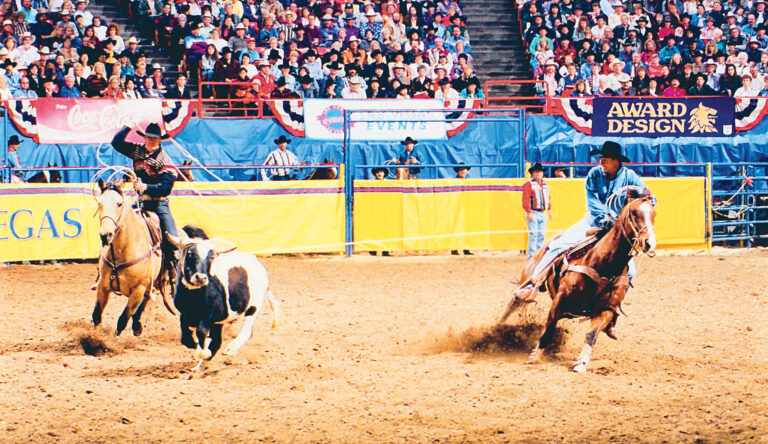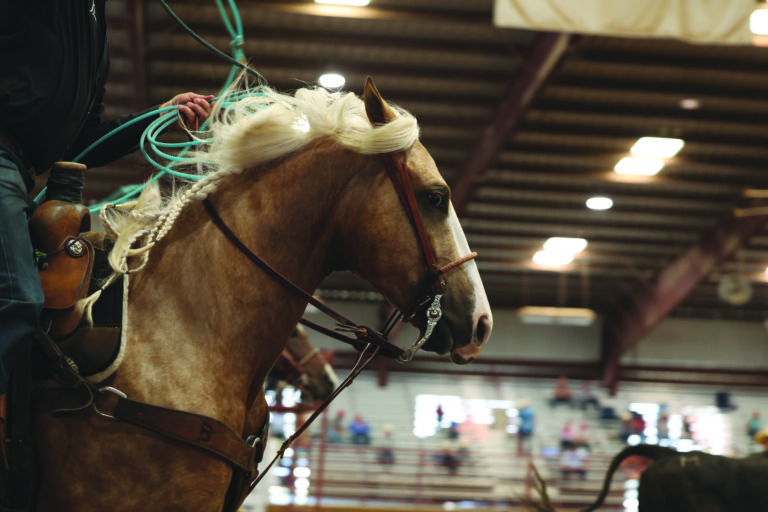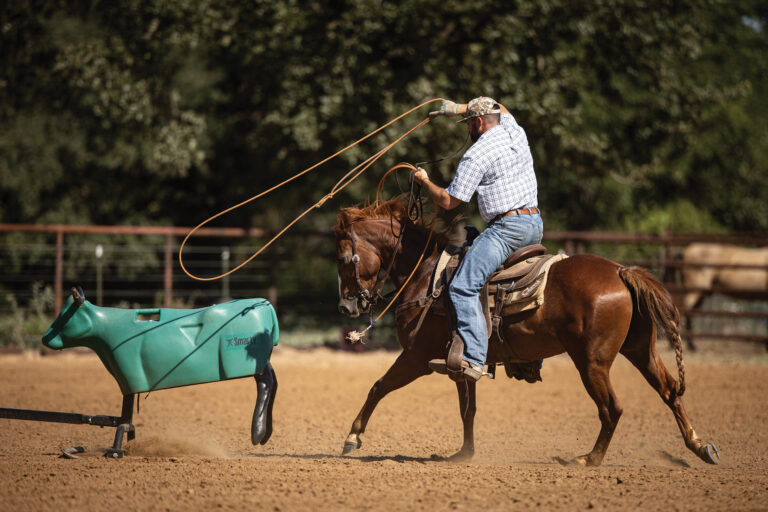When I started roping—watching the best ropers’ every move and entering at a very young age—I was always studying styles of ropers. Within those styles, you had naturally aggressive guys who tended to compete that way. They sometimes run over themselves and shoot themselves in the foot. The upside of that cavalier attitude, though, feeds into being a winner. At the other end of the mindset spectrum, you have guys who are a little more conservative-minded in their approach to competing.
On the heading side, the guys who could reach wanted to utilize that asset. Others who weren’t reachers had a really good, snappy head loop. They scored great, ran in close and used their horses better. Guys like Charles Pogue, Matt Tyler and Clay Tryan really used those great horses they rode. They were more aggressive with their horses than their ropes.
READ: Riding Is as Important as Roping at the Highest Level
Speed (Williams) revolutionized the heading by being able to do it all. Speed came in when Charles was dominating with his style, and used his reaching at the buildings and one-headers. He worked to develop into the all-around package, to where he had all the range.
On the heeling side, Rickey Green was at the wild extreme. He would ride by, rope steers on the left side of his horse and dally on the right side. He was Helter Skelter. Rickey’s the reason the crossfire rule came into effect. He sometimes didn’t even wait for the header to rope the steer.
Some heelers live and die by the sword, and rope everything on the first hop. Others figure out how to rope every steer by two feet. Bobby Harris was so aggressive early on in his career, but learned how to go catch every steer, and became one of the most effective catchers.
Bobby was very versatile, but his style changed from the first time I saw him rodeoing in Wyoming. When he came to Texas and started roping with Tee (Woolman), they built a very snappy, consistent run. Bobby Harris did not miss. He took the Helter Skelter out of heeling, and became a world champion.
This is a conversation worth looking at for you young guys coming up. I’ve used Speed and Bobby as examples from days gone by, but both of them made up their mind that they wanted to be versatile and not one-dimensional. The way roping continues to get faster and tougher, I think that’s how you’ve got to approach it. There’s a way to throw fast, and there’s a way to catch every steer. I love both styles, and being able to do both fits an arsenal quite nicely.
READ: Your Riding Style Impacts Your Roping Longevity
There are times you have to back in there and be 3.4. Then there are times you need to back in there and be 9 flat in a 3.4-second setup. We saw that at the last rodeo of the 2023 regular season in Sioux Falls, South Dakota. All you had to do was get a time on your first two steers to make it back. But then in the top eight, you had to be fast. A 3.4-second run won first, and you had to be 3-something to finish in the top four. At that one rodeo you had to be able to switch it up and do it all.
It’s sometimes like that at the NFR as well. You can get to the last day and have to be really fast to have a shot at the championship, or just need to catch. You better know how to do both. I’ve backed in there needing to win the 10th round to win the world, and other times all I had to do was get a time to win it. I like the second scenario a lot better, but being able to do both is where it’s at.
This is all part of learning the ropes of the game. Every setup throughout the year has a winning run. The heading side is so tough now because everybody’s going at ’em full bore and maxed out. Heelers still have a little bit of leeway, because it’s a different shot depending on how each run sets up and what kind of steer you run.
This is all just part of savvy gamesmanship as a heeler. If you get one spun to be 3.5 at a big-money rodeo, then the 3.5 shot is a snappy, high-percentage throw on the second hop. If you have one that’s trying to run you into the 4.5 hole, you’ve got to bang him right on the pop to be 4 flat. If your back’s against the wall, you might have to crawl out there another stride to set up your position to go him on the first hop. Because when it’s do or die, that’s what it takes to win. TRJ
Jake Barnes and Clay O’Brien Cooper won seven gold buckles and were unbeatable—and still are, to this day. What helped these two masters of their craft get to where they are today? And how can YOU apply the same principles to your own time in the arena? Watch Gold Buckle Secrets on Roping.com.









